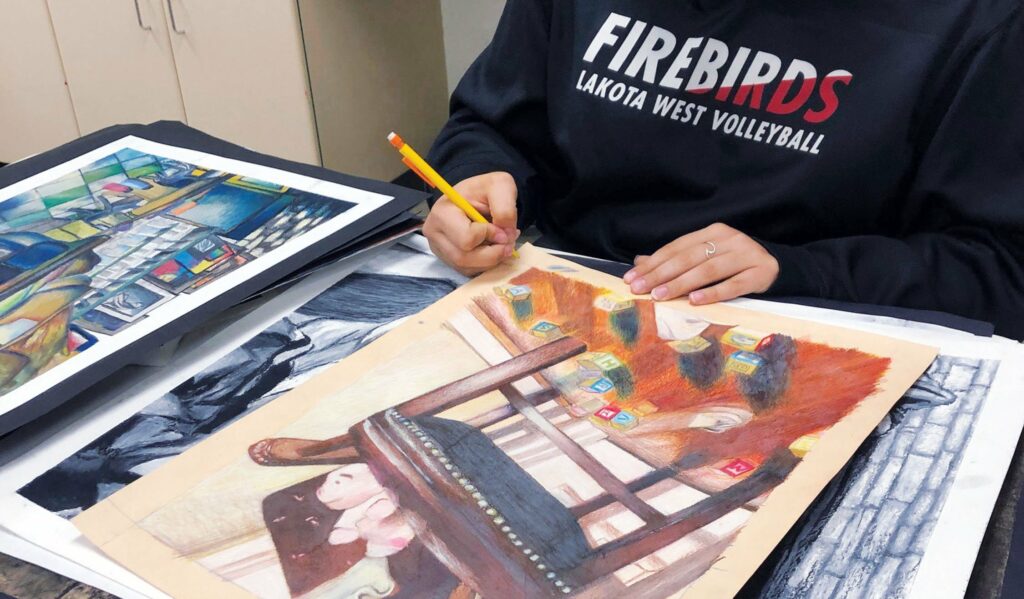The Scholastic Impact: A Local High School’s Perspective
Jodi Kessler and Stephanie Gauer both teach visual arts at Lakota West where the Scholastic Art & Writing Awards program is a longstanding annual tradition for students (grades 10-12.) They appreciate Scholastic for introducing young creatives to a bigger picture than the classroom can provide on its own. It demonstrates how art is more than something you do for a grade, or a hobby, or a core requirement.
“I think [Scholastic] really validates what we do in the classroom with the students,” says Kessler. “What we’re trying to convince them in class is that what we’re teaching them really applies to their lives. And that they can use art as a platform and a voice.”
“When they get that email or that certificate or see that artwork hanging in a show… it really is impactful. They remember those awards the rest of their lives. And they take pride in that. It gives them confidence to move forward into their adulthood.”
Scholastic also exposes their students to a broader community of peers beyond their usual bubble. And it gives them a chance to compete.
“It’s an important step in learning how to deal with acceptance and rejection. And looking at your work in a more critical way,” says Gauer. “But then also just looking at what other students the same age as you are creating.”
Having your work seen and appreciated by a complete stranger can be much more impactful than praise from a parent or teacher. And Scholastic provides a space for that to happen.
“[W]hen we enter these competitions and when they earn awards or win accolades, it really validates that their voice was heard,” says Kessler. “And it’s so much more meaningful to them to hear someone else tell them ‘good job— this is amazing art.’ Instead of hearing it from their teacher.”
Gauer says that their classes begin preparing for Scholastic as early as October. And it’s a learning experience every step of the way. Starting out, you learn to photograph and format your own work to the correct resolution size for digital submission. If you’re submitting a portfolio, you learn to write an artist statement. And in a “normal” year, if you win a regional award, you have to mat your work for the exhibition in February/March. For many students, Scholastic is the first time they’ve ever dealt with a mail-in entry form.
“These kids have grown up in a digital world where they don’t send letters in the mail. They don’t know what a stamp is [… So] it’s not just about the artwork. It’s about giving [the students] that experience of what it’s like to enter or apply for something. And just the amount of time and work that goes into that process […] Scholastic is a big part of our classroom.”
When looking back on her own career, Gauer credits a high school experience for getting the ball rolling. “I was lucky enough to participate in a program at my high school where we could go to the elementary school and teach a lesson […] I started noticing I felt really comfortable in front of the classroom. And I was relatively a very shy kid.”
Both Gauer and Kessler have seen Scholastic play a similar role for their students. It’s an opportunity for them to discover art as something they’re good at. Something they might continue pursuing.
“We’re so thankful that the Art Academy took Scholastic on,” says Kessler. “There used to be [one person] who did it and really worked their tail off for years and years and years […] I think it makes sense that a local arts college takes this on for our kids. It’s a lot of work on their part, and we appreciate that they do it. We truly appreciate it.”



View all the work HERE at the Scholastic Art & Writing Virtual Exhibition.










